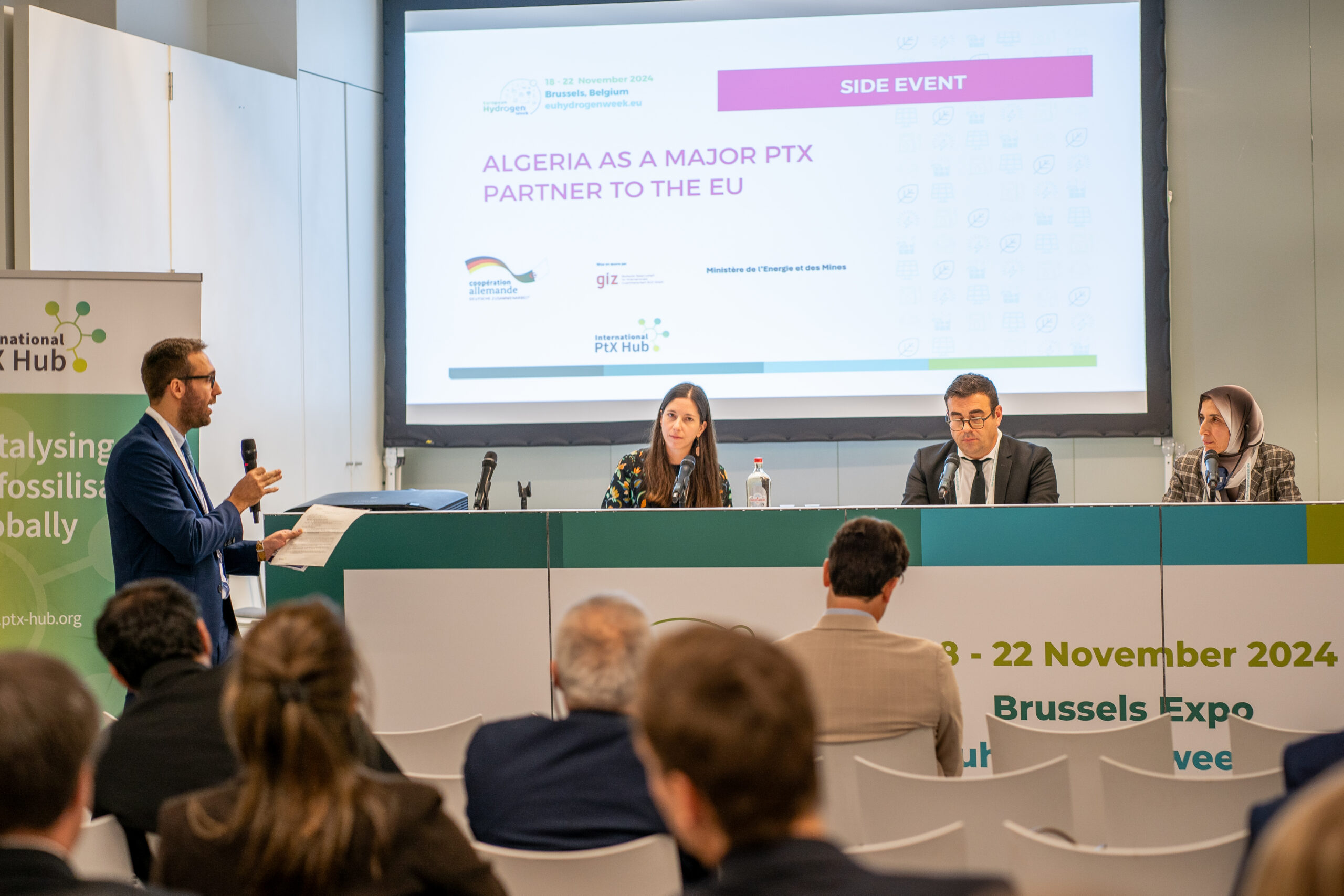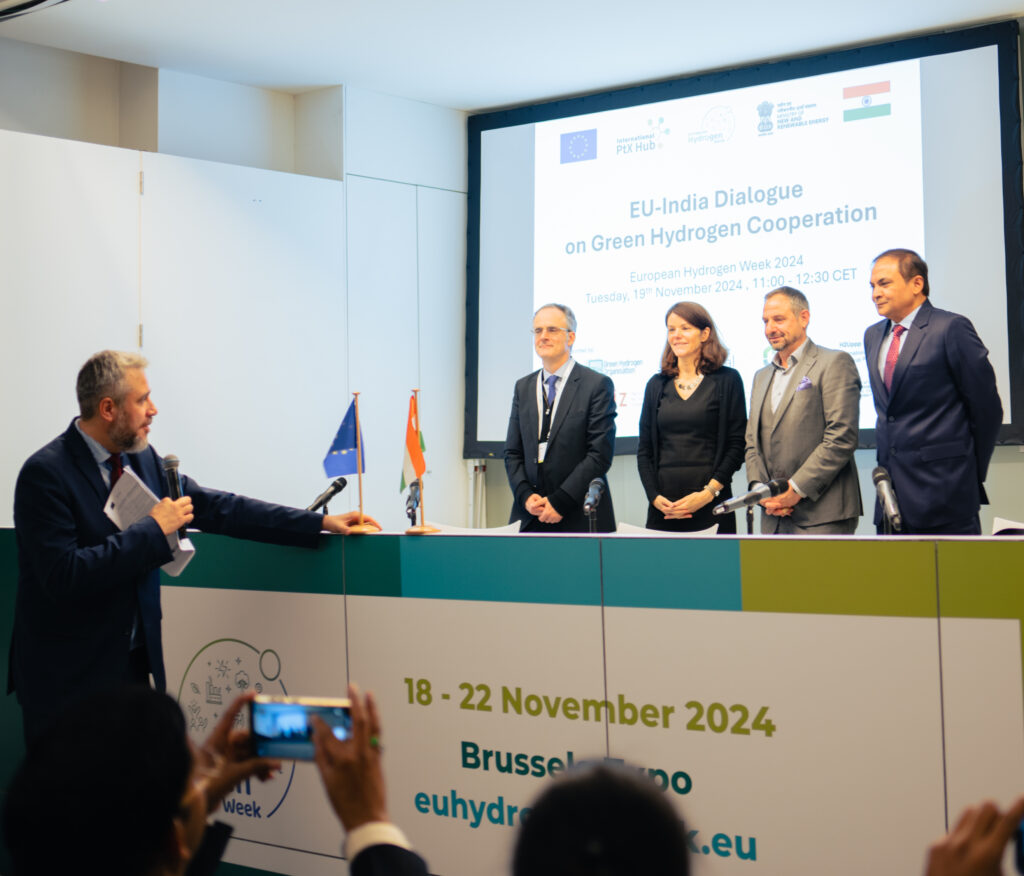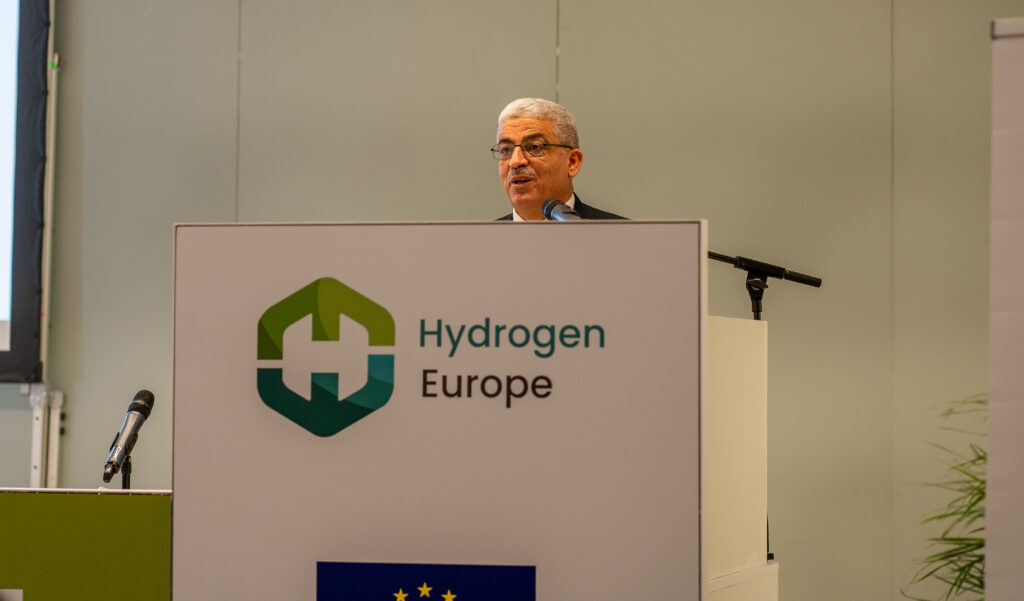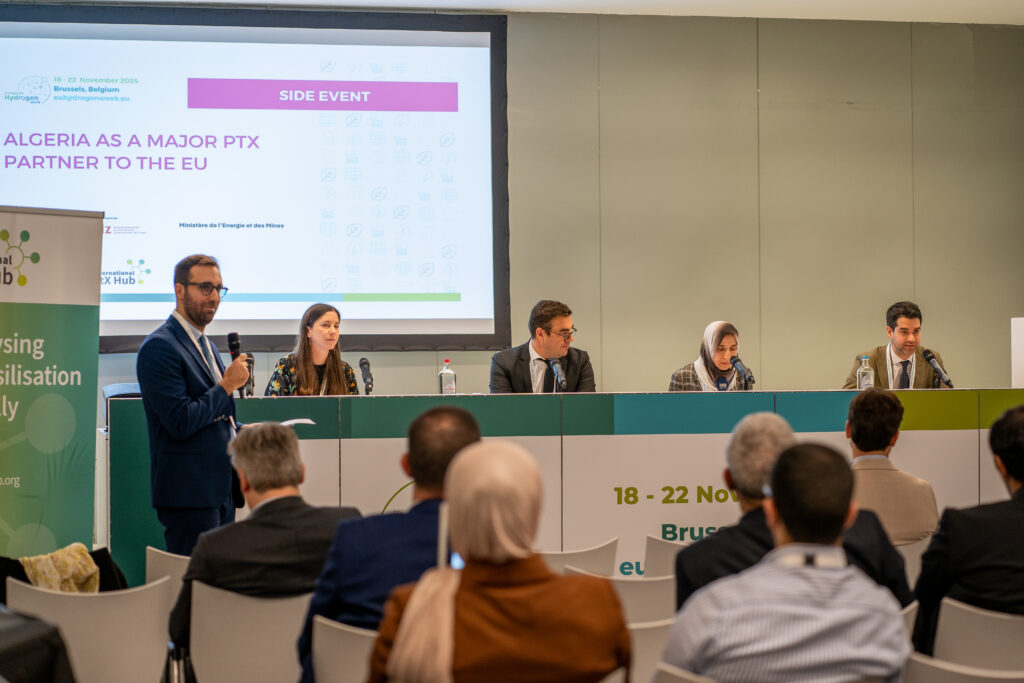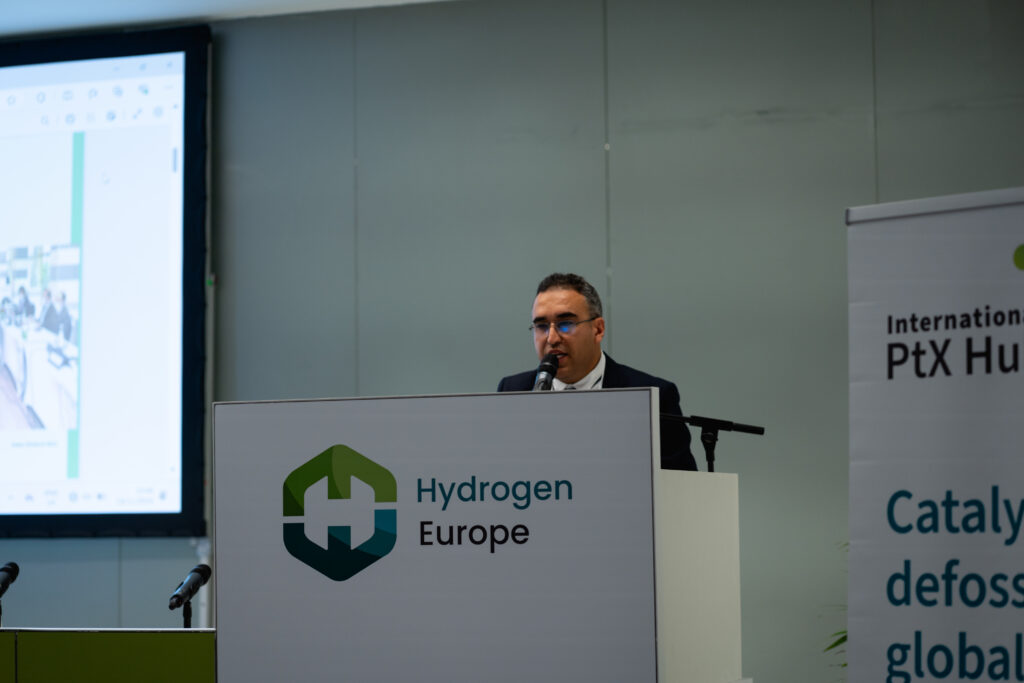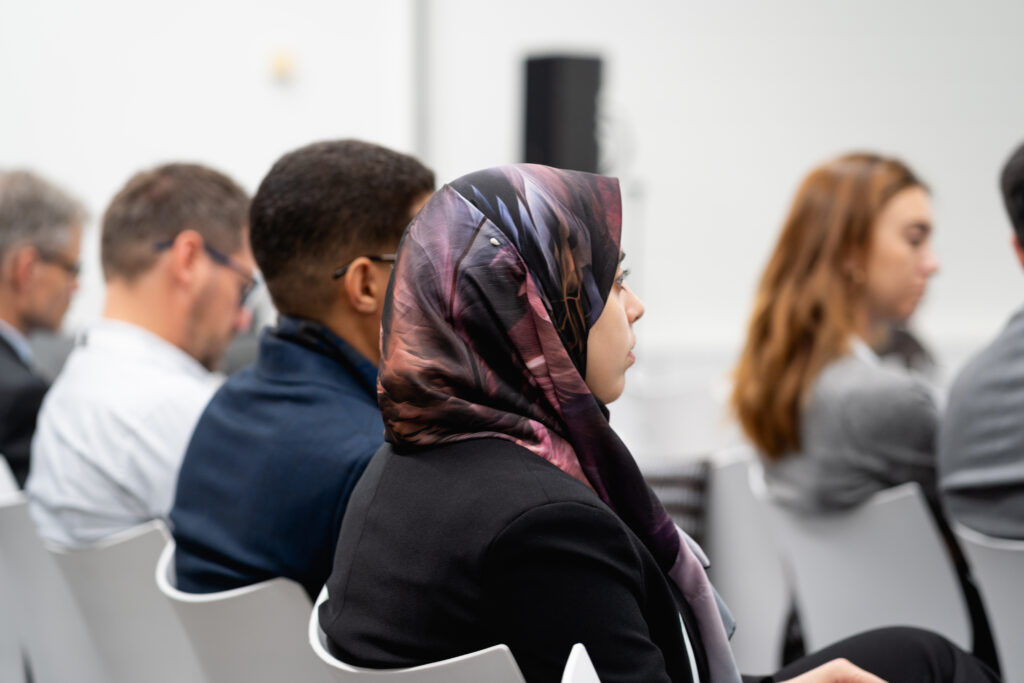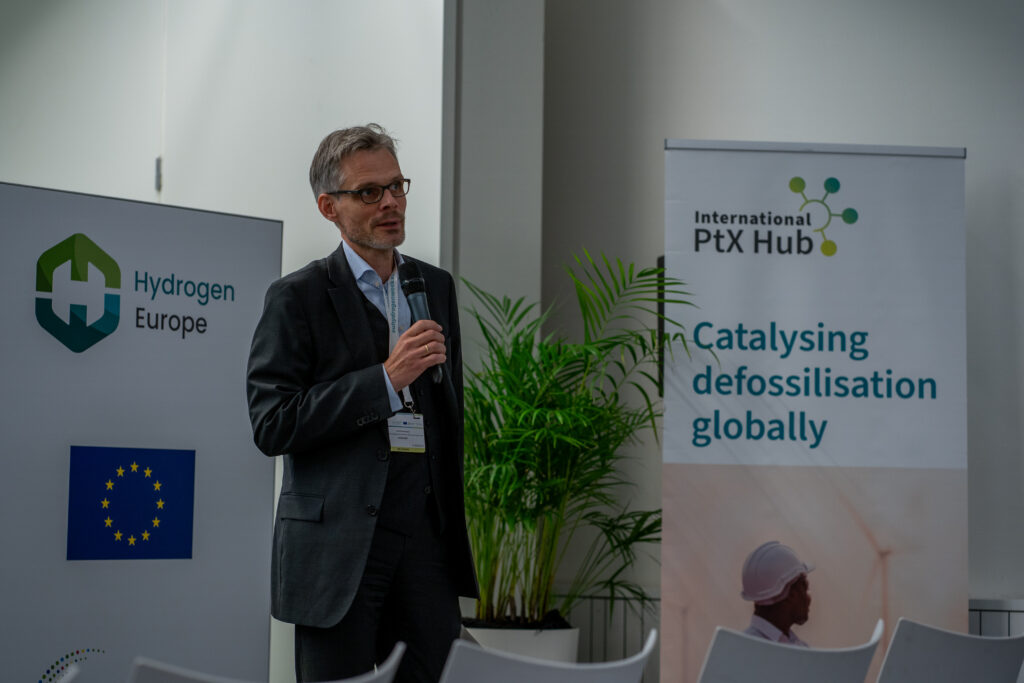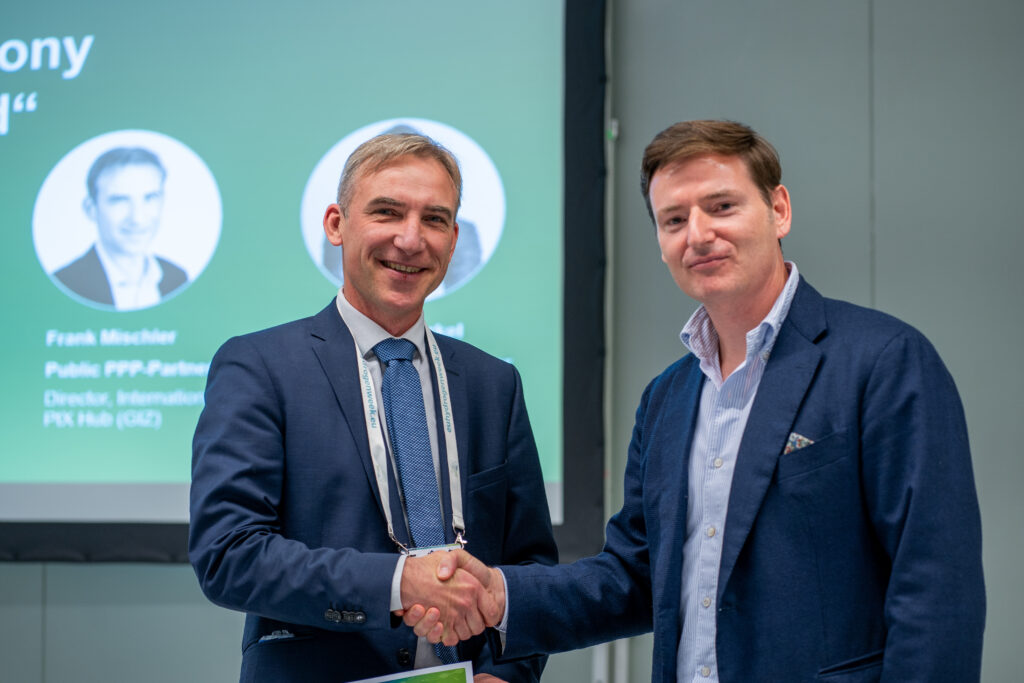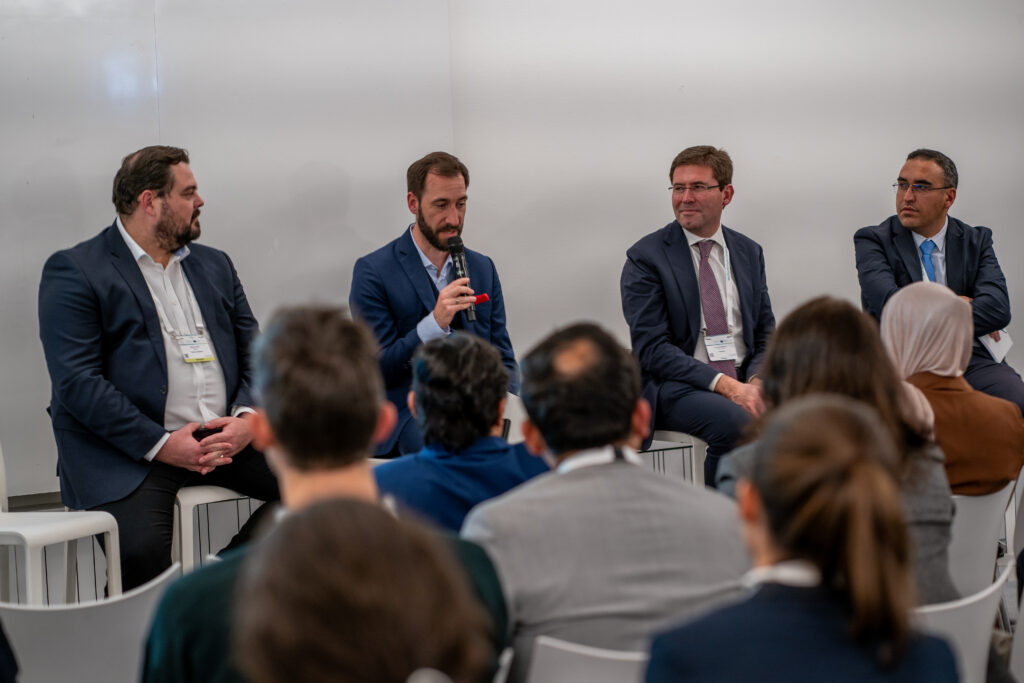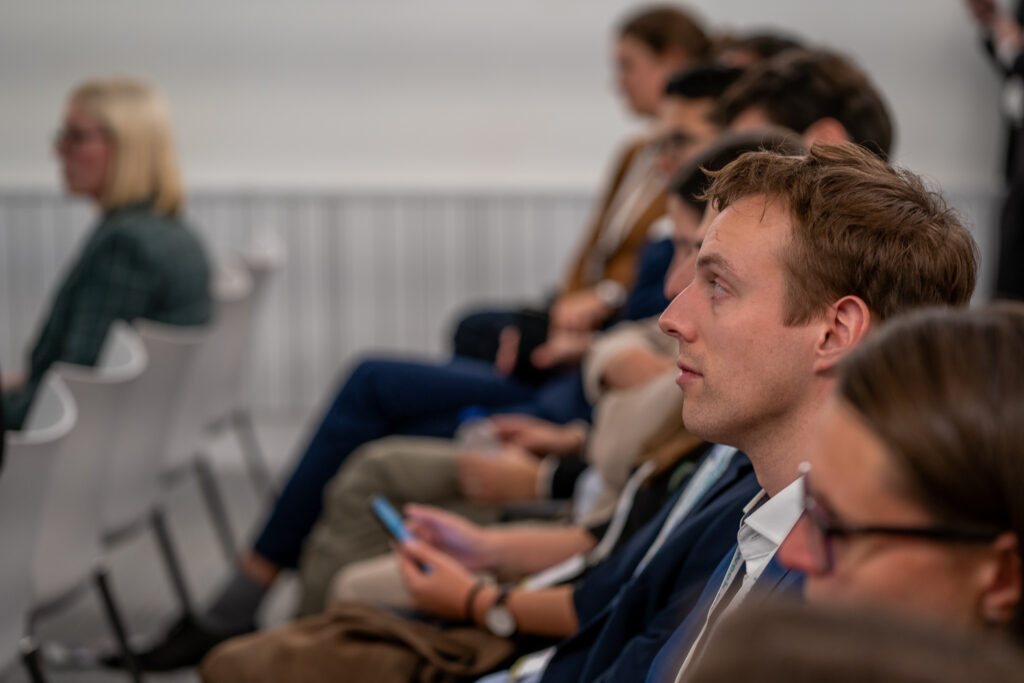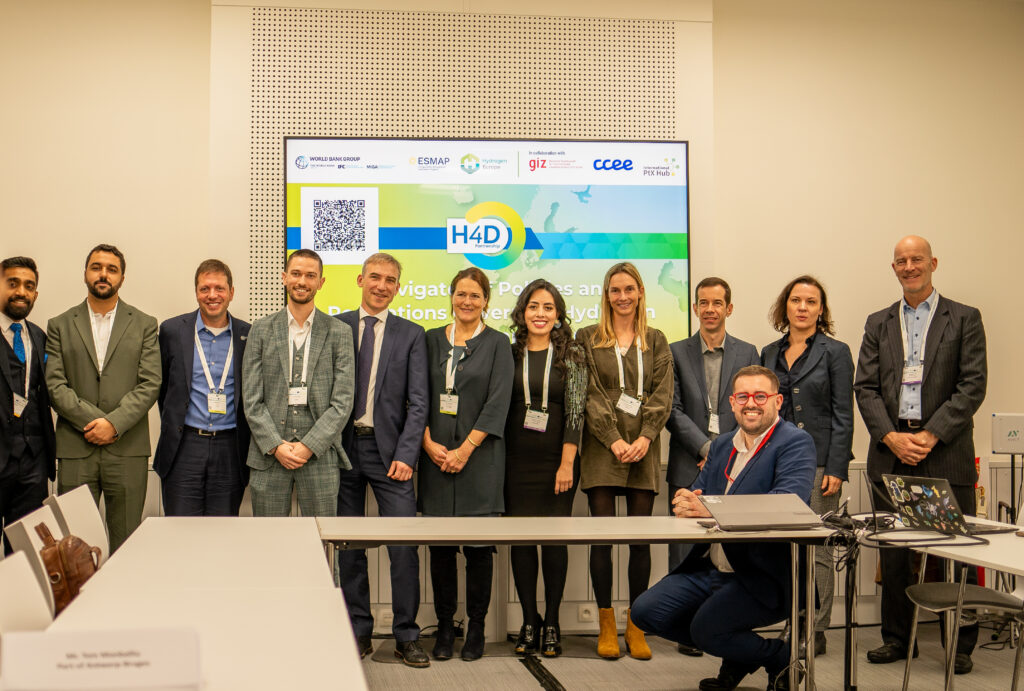Hydrogen seems to be at a crossroads. While cancelled projects make the news, installed electrolyser capacity in Europe has quadrupled to 1,701 MW in 2023 and is set to increase significantly to 2,527 MW in 2024. So, is hydrogen a hype or are we simply seeing a normalisation of the sector with steady growth – albeit below the expected rapid expansion? The European Hydrogen Week (EHW) 2024 came at a crucial time to bring together European and global policy makers, project developers, investors, and off-takers to strengthen relationships and reiterate commitments.
The biggest discussion at this year’s European Hydrogen Week was still about offtake. Project developers are ready to start production if only the offtake could be secured. Who is willing to sign a contract for 15 or even 20 years?
Frank Mischler, Director of the International PtX Hub
Especially in emerging markets, collaboration along the value chain and among multiple actors to share the higher risks is critical to bringing projects to financial close.
At the EHW 2024, the International PtX Hub in partnership with the Indo-German Energy Forum and TaqatHy, both funded by the German Government and implemented by the Deutsche Gesellschaft für Internationale Zusammenarbeit (GIZ), brought together delegations from Algeria, India and Morocco with EU policy makers and the European private sector. India’s Ministry of New and Renewable Energy was the exclusive partner country of the EHW 2024 and signed a Memorandum of Understanding (MoU) with Hydrogen Europe. The Green Hydrogen Association (GH2 India) and Hydrogen Europe also signed a MoU on fostering cooperation and mutual support and strengthening knowledge exchange to promote the advancement of the hydrogen sectors in India and Europe.
The EHW was co-organised by the European Commission, Hydrogen Europe, and the Clean Hydrogen Partnership. During the week, the International PtX Hub, H2Uppp, H2Diplo, the Green Hydrogen Business Alliance and the Climate and Energy Partnerships, all implemented by GIZ, hosted six official side events with key partners including Hydrogen Europe, the Green Hydrogen Organisation India, H2Global, the German Chambers of Commerce Abroad, IZES gGmbH and the Indo-German Energy Forum (IGEF).
India reiterates ambitions to become global market leader
The “EU-India Exchange on Green Hydrogen” on November 19 brought together key stakeholders from India and Europe to strengthen the partnership and advance a sustainable hydrogen economy.
Mechthild Wörsdörfer, European Commission, Dr Andreas Nicolin, German Federal Ministry for Economic Affairs and Climate Action, and Shri Prashant Kumar Singh Indian Ministry of New and Renewable Energy (MNRE) presented their shared vision for accelerating green hydrogen initiatives in India and the EU.
Algeria presents strategy and pilot projects aimed at ramping up the export of renewable hydrogen to the EU
At the side event “Algeria as a major PtX partner to the EU: strategy and pilot projects” on November 20, Algerian, EU and German policymakers and regulatory experts shed light on the progress of Algeria’s hydrogen strategy.
Representatives of the Ministry of Energy and Mining in Algeria presented the national strategy for hydrogen, which plans to supply approximately 10% of the EU’s hydrogen needs in 2040. Until 2030, the first phase of the strategy involves the operation of several pilot projects with a production electrolysis capacity of between 2 to 4 MW and 4 to 8 MW of renewable power, as well as a 50 MW reference project. These projects will enable testing the entire value chain and green hydrogen application cases, including storage, e-kerosene, and e-methanol, among others.
The panelists discussed which role the regulatory framework plays in the implementation of the Algerian hydrogen strategy and how international cooperation formats, e.g. with the Federal Ministry for Economic Cooperation and Development (BMZ), the Federal Ministry for Economic Affairs and Climate Action (BMWK) and the EU can support this development. The Algerian Regulatory Commission for Electricity and Gas, CREG highlighted that the establishment of the regulatory framework for green hydrogen until 2025 is a priority in the national strategy. Building local green hydrogen certification capacity for project developers and regulators was also underlined as key and the mentioned pilot projects could support this. Specifically, the pre-feasibility and feasibility project phases provide the ideal opportunity to test certification of the projects to have a final product that complies with EU regulations.
Since 2015, GIZ Algeria and the Algerian government have been collaborating on renewable energy and are now expanding to green hydrogen through the TaqatHy project. TaqatHy is commissioned by the Federal Ministry for Economic Cooperation and Development (BMZ), in partnership with the Algerian Ministry of Energy and Mines.
Morocco presents its ‘Offre Maroc’ investment strategy
A Moroccan delegation further strengthened the partnership between Morocco and the EU on Power-to-X. The ‘Offre Maroc’ investment strategy exemplifies the rapid development of the regulatory landscape for PtX in Morocco. The investment offer provides a pragmatic approach to developing and investing in green hydrogen projects. It aims to facilitate investment in integrated industrial scale projects, both for domestic use and for export.
At the „Green Hydrogen Moroccan Offer: Unlocking the full potential of the EU-Morocco Green Partnership” side event on November 19, the European Commission’s Directorate-General NEAR highlighted the increasingly close cooperation between Morocco and the EU in the field of green energy. Both offer a positive business environment and are working together to align regulatory frameworks to further attract project developers and investors.
A key role is being played by the Moroccan Agency for Sustainable Energy (Masen), which has established itself as a one-stop-shop for potential investors and shared its approach at the event. Hydrojeel, a subsidiary of InnovX, presented their vision to produce green electrons. As part of its strategy, Hydrojeel will develop the Green Ammonia Programme for the OCP Group, primarily for the production of e-fertiliser. The Green Hydrogen Cluster, a Moroccan private sector association, aims to create entire local value chains.
Advancing green hydrogen for Ukraine’s energy transition and reconstruction
Ukraine is forging ahead with green hydrogen as a strategic pillar for its green reconstruction, despite ongoing challenges induced by Russia’s war of aggression. Together with H2Uppp and H2Diplo, the side event “Investing Today in Ukraine’s Hydrogen Future: De-risking Opportunities and Securing Tomorrow’s Energy Market” on November 20 focused on how to finance and derisk Ukraine’s green hydrogen ramp up.
A Ukrainian hydrogen strategy is in the pipeline, with a clear political ambition to engage in this emerging sector. Green hydrogen is not only seen as an economic opportunity but also as a tool for decarbonisation, energy decentralisation, and further alignment with the EU. Energy infrastructure risks from ongoing Russian attacks, heavy reliance on foreign capital, and offtake uncertainties impede investment security. Ukraine’s vast natural gas pipeline network can offer possibilities for exporting green hydrogen to Europe.
Partnerships with Germany and the EU bring technical expertise, funding opportunities, and regulatory alignment to the table. After the side event, GIZ and N1 Capital signed a MoU under the H2Uppp programme to explore a green hydrogen pipeline-bound public-private partnership in Western Ukraine. The MoU aims to assess the feasibility, environmental impacts, and legal requirements for hydrogen feed-in to the Central European Hydrogen Corridor and develop scalable projects in Uzhgorod and Mukachevo, near Poland and Slovakia.
Can the Sustainable Aviation Fuel targets of Refuel EU Aviation be reached?
Off-takers, producers and EU policymakers discussed whether the EU is on track to meet ReFuel Aviation’s Sustainable Aviation Fuels (SAF) targets in the side event “SAF targets. ☑ check! Now, where is the boom?” on November 20. The EU has set ambitious binding targets for the European aviation sector to incorporate SAF into its fuel mix. Fuel providers need to blend their fuel supply with SAF to provide this new, in-demand green transport.
Looking to the future, the panelists noted that customers will increasingly be more specific which type of SAF they demand. Currently, HEFA, produced from residuals oils, dominates the infant market. In future, e-SAF, a synthesis of renewable hydrogen with a sustainable carbon source, may become the largest share of SAF used. Currently, there is little SAF on the market, but as this share augments it will become increasingly important to know which SAF and what emissions savings are associated with that particular form of SAF.
It will most likely not be possible to produce enough SAF in the EU at competitive prices to meet the ambitious targets and defossilise fast enough. Imports will thus be necessary and should be diversified, and sourced from several reliable trade partners. This also provides an opportunity to export European technologies for e-SAF production in the Global South. Hence, European stakeholders must be involved at an early stage in e-SAF projects in developing and emerging countries.
The panelists also discussed the open question of whether existing funding is sufficient to support new project developers seeking to produce e-SAF with new technologies, or whether additional funding windows or schemes focused on SAF would help accelerate the ramp up of production.
Navigating CBAM and policy responses in green hydrogen and PtX trade
The European Union’s Carbon Border Adjustment Mechanism (CBAM) provides incentives for producers in third countries to step up efforts to reduce emissions in their value chains. At the side event “From Barriers to Bridges: Navigating CBAM and Policy Challenges in Green Hydrogen Trade” on November 20, experts from the EU, India and Morocco discussed the potential of CBAM for global defossilisation.
Certified renewable hydrogen can be used as a means to reduce the exposure to CBAM and therefore create a stronger business case for green products. CBAM could also act as an incentive for third countries such as Morocco or India to increase the added value of exports, e.g. e-fertiliser instead of hydrogen or ammonia to the EU, while reducing the carbon footprint of exports. In line with this, the CBAM supports the introduction of carbon pricing around the world.
For producers, CBAM may influence the choice of carrier for hydrogen imports into the EU. As the CBAM will enter its final phase at the end of 2025, it was crucial to discuss it at this year’s EHW.
Launch of the Navigator on EU Regulation of Hydrogen and Derivatives Imports
The World Bank, Hydrogen Europe and H4D, in collaboration with the International PtX Hub and the Brazilian Chamber of Electric Energy Commercialisation (CCEE), launched an EU Hydrogen Regulatory Navigator on November 19 during the EHW 2024. It can be a challenge for producers and investors outside the EU to understand the existing EU regulations on hydrogen and its derivatives. The same is true for regulators who are considering aligning their national regulatory frameworks with the EU rules. The Regulatory Navigator fills this information gap by providing an overview of all relevant EU legislation on the import of hydrogen and its derivatives in just a few pages.
Renewed commitment from policymakers, producers, and off-takers
With the global hydrogen and Power-to-X markets still facing the chicken-and-egg problem of insufficient demand and production, European Hydrogen Week 2024 served to renew the European Union’s long-term commitment and demand for green hydrogen, ammonia, methanol, fertilisers, steel, and sustainable fuels on global markets.
